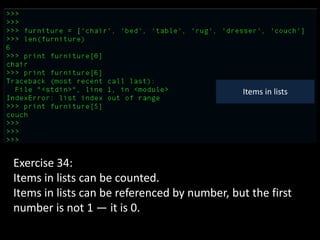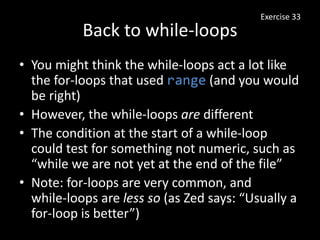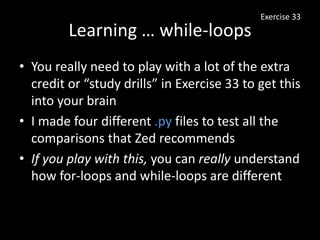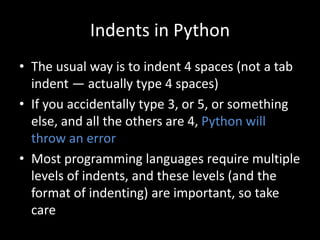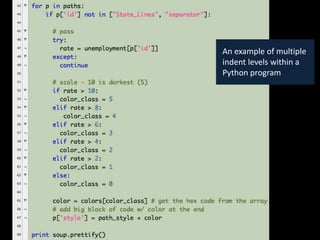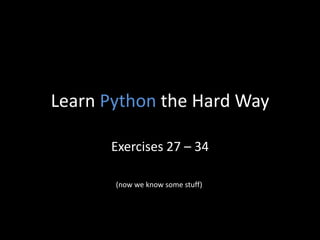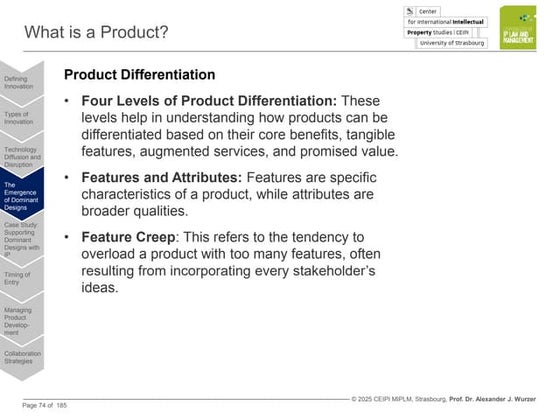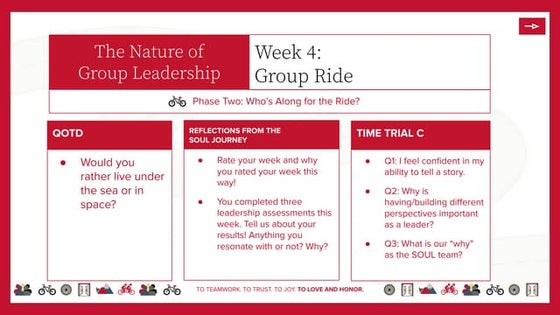Learning Python - Week 4
- 1. Learn Python the Hard Way Exercises 27 â 34 http://learnpythonthehardway.org/
- 2. New things in ex. 27â34 âĒ Booleans: True, False, logic, operators âĒ if â elif â else: Note the relationship to True and False âĒ loops: 2 kinds, for and while âĒ lists and how to â create a new list â add and delete things from lists â find out whatâs in a list
- 3. How the Boolean AND works There is a very long bungee jump above a deep river gorge in Africa. You say: âIf the bungee jump looks safe and it is cheap, then I will do it.â
- 4. How the Boolean AND works âIf the bungee jump looks safe and it is cheap, then I will do it.â looks safe = False (you wonât do it) is cheap = False (you wonât do it) Youâll only do it if both conditions are TRUE.
- 5. How the Boolean OR works There is a great party Tuesday night, but you are in danger of failing your Wednesday test. You say: âIf I finish studying in time or the test is canceled, then I will go to the party.â
- 6. How the Boolean OR works âIf I finish studying in time or the test is canceled, then I will go to the party.â finish studying = True (can go) test canceled = True (can go) You can go if only one of the conditions is TRUE. Or both. But one is enough.
- 7. and True and True : True True and False : False False and True : False False and False : False True or True : True True or False : True False or True : True False or False : False âIf the bungee jump looks safe and it is cheap, then I will do it.â âIf I finish studying in time or the test is canceled, then I will go to the party.â or
- 8. Boolean operators (symbols) 1 != 0 1 == (3 â 2) 5 >= 1 10 <= 100 1 != (3 â 2) 1 == 0 5 <= 1 10 >= 100 True True True True False False False False
- 9. Exercise 28
- 10. if â elif â else (if statements)
- 11. Exercises 29 and 30
- 12. Exercises 29 and 30
- 13. Exercise 30
- 14. Loops Lists
- 15. Loops âĒ Every programming language has loops âĒ A loop typically runs over and over until something makes it stop (different from a usual function, which runs only once) âĒ The âforâ loop is a standard kind of loop âĒ for-loops can appear inside a function Exercise 32
- 16. Loops âĒ Standard syntax for starting a for-loop in Python: for fruit in fruits: Exercise 32 Note that fruit could be any variable name, like x or a or cat. In this case, there must already be a list named fruits (more about lists in a minute)
- 17. Loops âĒ Also standard syntax (but different) for starting a for-loop in Python: for i in range(0, 9): Exercise 32 In this case, we donât know the name of the list yet. Or maybe this loop does not even use a list.
- 18. So, 2 different for-loops for fruit in fruits: print fruit Exercise 32 for i in range(0, 9): print "Hello!" Like functions, loops must be indented. They can have many lines. These are short just to make them simple.
- 19. while-loops Exercise 33 âĒ The âwhileâ loop is another standard kind of loop âĒ while-loops can appear inside a function âĒ If you can figure out how to do what you want with a for-loop, then use a for-loop. âĒ If you must use a while-loop, be careful that it will not run forever. If it does, itâs an infinite loop (which is NOT good).
- 20. Lists âĒ In many languages, a âlistâ is called an âarrayâ (but Zed says we should say âlistâ for Python) âĒ Lists can be giganticâthere can be thousands of items in one list, or none âĒ The standard format of a list in Python: fruits = ['apples', 'oranges', 'pears', 'apricots'] Exercise 32 Note: If there are numbers in the list, they wonât have quotes around them.
- 21. Loops and Lists These two for-loops do exactly the same thing: fruits = ['apples', 'oranges', 'pears', 'apricots'] for fruit in fruits: print "A fruit of type: %s" % fruit for y in fruits: print "A fruit of type: %s" % y Exercise 32
- 22. Lists âĒ You actually already saw a list in Exercise 25, when you did this: words = stuff.split(' ') âĒ After that, words contained a list: ['All', 'good', 'things', 'come', 'to', 'those', 'who', 'wait.'] âĒ You can use pop() and len() on any list Exercise 32
- 23. Some things we do with lists fruits.pop() fruits.append("bananas") fruits.extend(["plums", "mangoes"]) del fruits[2] print fruits With append() you can add only one item at a time to the list.
- 24. Exercises 32, 34
- 25. Items in lists Exercise 34: Items in lists can be counted. Items in lists can be referenced by number, but the first number is not 1 â it is 0.
- 26. Back to while-loops âĒ You might think the while-loops act a lot like the for-loops that used range (and you would be right) âĒ However, the while-loops are different âĒ The condition at the start of a while-loop could test for something not numeric, such as âwhile we are not yet at the end of the fileâ âĒ Note: for-loops are very common, and while-loops are less so (as Zed says: âUsually a for-loop is betterâ) Exercise 33
- 27. Learning âĶ while-loops âĒ You really need to play with a lot of the extra credit or âstudy drillsâ in Exercise 33 to get this into your brain âĒ I made four different .py files to test all the comparisons that Zed recommends âĒ If you play with this, you can really understand how for-loops and while-loops are different Exercise 33
- 29. A word of advice So Exercise 31 is long, but easy. You might feel like now itâs all getting easy âĶ BUT WAIT! No, itâs not. âĒ Exercise 32 introduces the for-loop. âĒ Exercise 33 introduces the while-loop. âĒ Exercise 34 introduces how we navigate through the elements in a list. These last 3 exercises are QUITE challenging!
- 30. Indents in Python âĒ The usual way is to indent 4 spaces (not a tab indent â actually type 4 spaces) âĒ If you accidentally type 3, or 5, or something else, and all the others are 4, Python will throw an error âĒ Most programming languages require multiple levels of indents, and these levels (and the format of indenting) are important, so take care
- 31. An example of multiple indent levels within a Python program
- 32. Learn Python the Hard Way Exercises 27 â 34 (now we know some stuff)
Editor's Notes
- #2: SOURCE http://learnpythonthehardway.org/book/
- #4: The way AND and OR work in programming languages is pretty much the same as the way we use them in real life.
- #5: When you say IF with AND, you usually mean that both things have to happen.
- #6: Again, the way AND and OR work in programming languages is pretty much the same as the way we use them in real life.
- #7: When you say IF with OR, you usually mean that only one of the things has to happen.
- #8: Questions?
- #9: Questions?
- #10: CODE EXAMPLE. LPTHW Exercise 28. Zed gives you lots of examples to play with. PLAY. It works!
- #12: CODE EXAMPLE. LPTHW Exercises 29 and 30. Introduction to IF and IF â ELSE.
- #13: CODE EXAMPLE. LPTHW Exercises 29 and 30. Introduction to IF and IF â ELSE.
- #14: CODE EXAMPLE. LPTHW Exercise 30. Note that when the condition is met, none of the other âelifsâ after that are executed. They do not run.
- #16: NOTE: Iâm skipping over Exercise 31 because it is just more of the same from Exercise 30.
- #20: Just a quick hop forward to exercise 33 â we will come back to it later.
- #23: Review LPTHW Exercise 25 and try to play with lists, using things you did in Ex. 25. WHY DID WE SPLIT? By turning freetext into a list, we can examine it in all kinds of ways. We are sort (alphabetical order), pop() words off the ends, move words from one list to another. And more.
- #25: CODE EXAMPLE. LPTHW Exercise 32. Adding ârangeâ allows you to make a different kind of âforâ loop, with a limited number of times that it will run. This version (0, 100), would run 100 times, except that I built in a âbreak.â
- #26: LPTHW Exercise 34 -- The most important thing to understand about this is that you can pluck out any item in a list, but you must remember that the first one is item â0â and not item â1.â
- #27: LPTHW Exercise 33
- #28: LPTHW Exercise 33
- #29: LPTHW Exercise 33 -- notice how I write comments for myself. I find them to be VERY helpful to me when I look at the code weeks or months later.
- #30: These things are really important in programming â AND you will see all of them AGAIN in JavaScript and jQuery, after Spring Break. So itâs in your best interest to spend time with them NOW and really try to understand them.
- #32: This comes from an example in the book Visualize This, by Nathan Yau, pp. 288ff. The exercise is to color-code a U.S. map using data on unemployment in each U.S. county.
- #33: Mindy McAdams - CONTACT â http://mindymcadams.com/

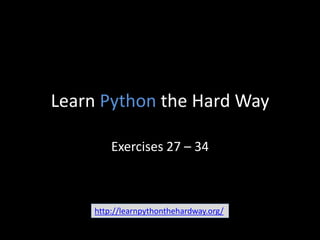
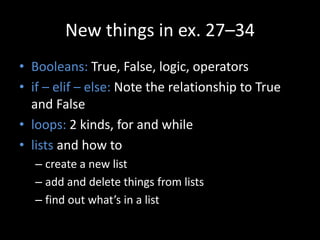
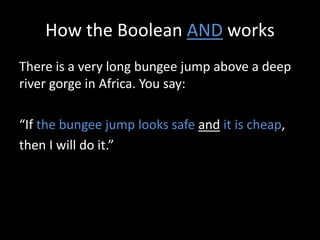

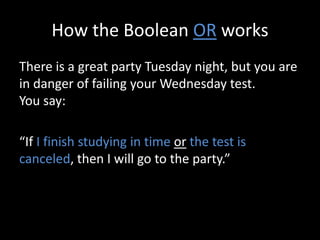
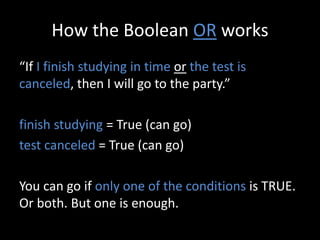
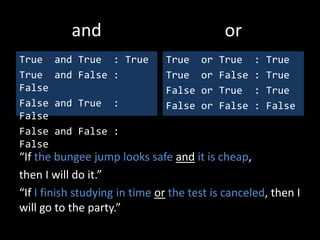
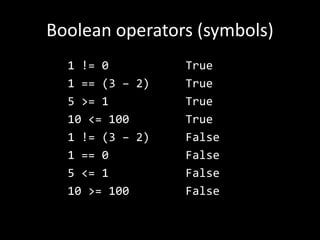
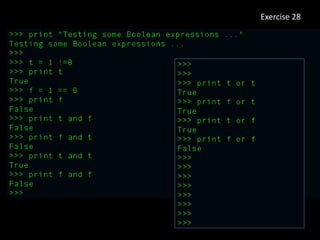
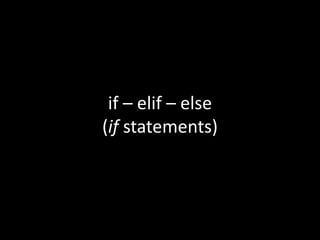
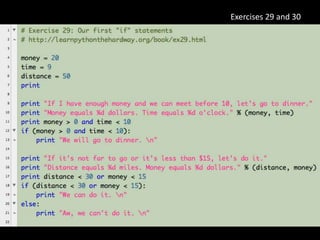
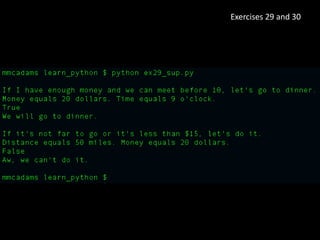

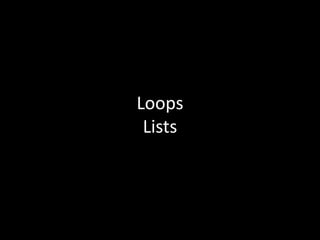
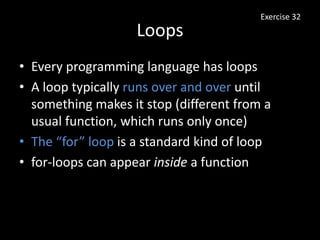
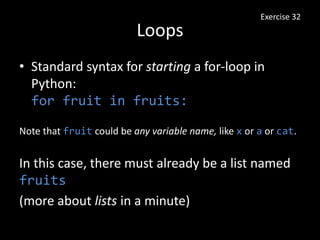
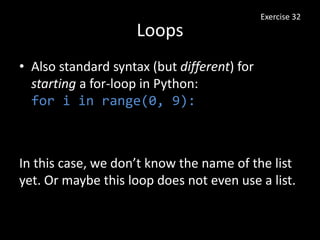
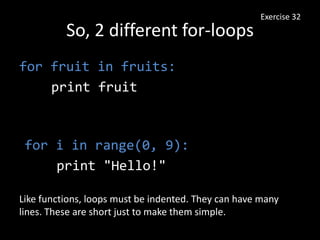
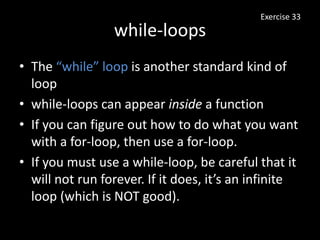
![Lists
âĒ In many languages, a âlistâ is called an âarrayâ
(but Zed says we should say âlistâ for Python)
âĒ Lists can be giganticâthere can be thousands
of items in one list, or none
âĒ The standard format of a list in Python:
fruits = ['apples', 'oranges', 'pears',
'apricots']
Exercise 32
Note: If there are numbers in the list, they wonât have quotes around them.](https://image.slidesharecdn.com/lpthwweek4-130206072014-phpapp02/85/Learning-Python-Week-4-20-320.jpg)
![Loops and Lists
These two for-loops do exactly the same thing:
fruits = ['apples', 'oranges', 'pears',
'apricots']
for fruit in fruits:
print "A fruit of type: %s" % fruit
for y in fruits:
print "A fruit of type: %s" % y
Exercise 32](https://image.slidesharecdn.com/lpthwweek4-130206072014-phpapp02/85/Learning-Python-Week-4-21-320.jpg)
![Lists
âĒ You actually already saw a list in Exercise 25,
when you did this:
words = stuff.split(' ')
âĒ After that, words contained a list:
['All', 'good', 'things', 'come', 'to',
'those', 'who', 'wait.']
âĒ You can use pop() and len() on any list
Exercise 32](https://image.slidesharecdn.com/lpthwweek4-130206072014-phpapp02/85/Learning-Python-Week-4-22-320.jpg)
![Some things we do with lists
fruits.pop()
fruits.append("bananas")
fruits.extend(["plums", "mangoes"])
del fruits[2]
print fruits
With append() you can add only one item at a time to the list.](https://image.slidesharecdn.com/lpthwweek4-130206072014-phpapp02/85/Learning-Python-Week-4-23-320.jpg)

